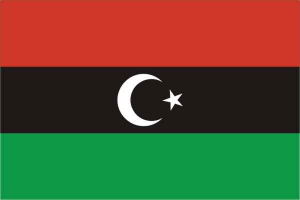Language/Libyan-arabic/Vocabulary/Animals
Hi Libyan Arabic learners! 😊
In this lesson, we will explore the vocabulary related to animals in Libyan Arabic. Animals play an essential part in Libyan culture, and it reflects in the country's most significant celebrations and traditions, such as Eid Al-Adha or the "Festival of Sacrifice."
Take a moment to explore these relevant pages as you conclude this lesson: Say Hello and Greetings in Libyan Arabic, Feelings and Emotions, Education & Express Surprise.
Basic Vocabulary[edit | edit source]
Let's start by learning the most common animals in Libyan Arabic:
| Libyan Arabic | Pronunciation | English Translation |
|---|---|---|
| الحمار | al-himaar | Donkey |
| البقرة | al-ba'rah | Cow |
| الجمل | al-jamal | Camel |
| الغنم | al-ghanam | Sheep |
| القطة | al-qatta | Cat |
| الكلب | al-kalb | Dog |
| الخنزير | al-khinzir | Pig |
The example below shows how you can use this vocabulary in context:
- Person 1: هناك قطة في الحديقة. القطة صفراء. (Hunāk qatta fī al-ḥadīqah. Al-qatta ṣafrāʾ.)
- Person 2: لقد رأيت القطة الصفراء. كانت جميلة! (Laqad ra'aytu al-qatta al-ṣafrāʾ. Kānat jamīlah!)
It's essential to note that Libyan Arabic pronunciation varies throughout the country. Some sounds and accents can differentiate between regions, making some words sound different. However, the vocabulary presented here is standard and can be understood in all regions.
Advanced Vocabulary[edit | edit source]
Let's explore some more advanced vocabulary related to animals in Libyan Arabic:
| Libyan Arabic | Pronunciation | English Translation |
|---|---|---|
| الفيل | al-feel | Elephant |
| الذئب | al-dhi'b | Wolf |
| الوز | al-waz | Goose |
| الغزال | al-ghazaal | Gazelle |
| النمر | al-nimar | Tiger |
| الدِّيك | al-dik | Rooster |
| الثعلب | al-tha'lab | Fox |
Here's another example of how these words can be used in context:
- Person 1: هل رأيت يومًا نمرًا حقيقيًا؟ (Hal ra'ayta yawman nimarًa ḥaqīqiyana?)
- Person 2: لا، ولكني رأيت غزالًا في الغابة. (Lā, walakinnī ra'aytu ghazaalًa fī al-ghābah.)
Animals play a significant role in Libyan Arabic idioms and phrases. Here are a few examples:
- "ما بيناش النمر والهر" (Mā bīnāsh al-nimar wal-hir) - "There's no difference between the tiger and the cheetah." Referring to people who are similar in character or appearance.
- "كالملوحة العوراء فى مهلها حلال و لكن .... ريحها كريهة" (Kalmalūḥat al-ʿawrā' fī mahilhā ḥalāl wa lakin... rīḥahā karīhah) - "Like salted meat in its preserved state, it is lawful, but ...it stinks." Referring to people who appear good, but their actions or words betray them.
Conclusion[edit | edit source]
With this lesson, we hope you've gained valuable insights into Libyan Arabic's vocabulary related to animals. To improve your Libyan Arabic Vocabulary, you can also use the Polyglot Club website. Find native speakers and ask them any questions! You can also check out our Vocabulary page for more.
Remember, animals are an essential part of Libyan culture, and their significance is reflected in everyday life, idioms, and celebrations.
➡ If you have any questions, please ask them in the comments section below.
➡ Feel free to edit this wiki page if you think it can be improved. 😎
Upon wrapping up this lesson, take a look at these related pages: How to Say Goodbye in Libyan Arabic, Fruits, Count to 10 & Colors.

